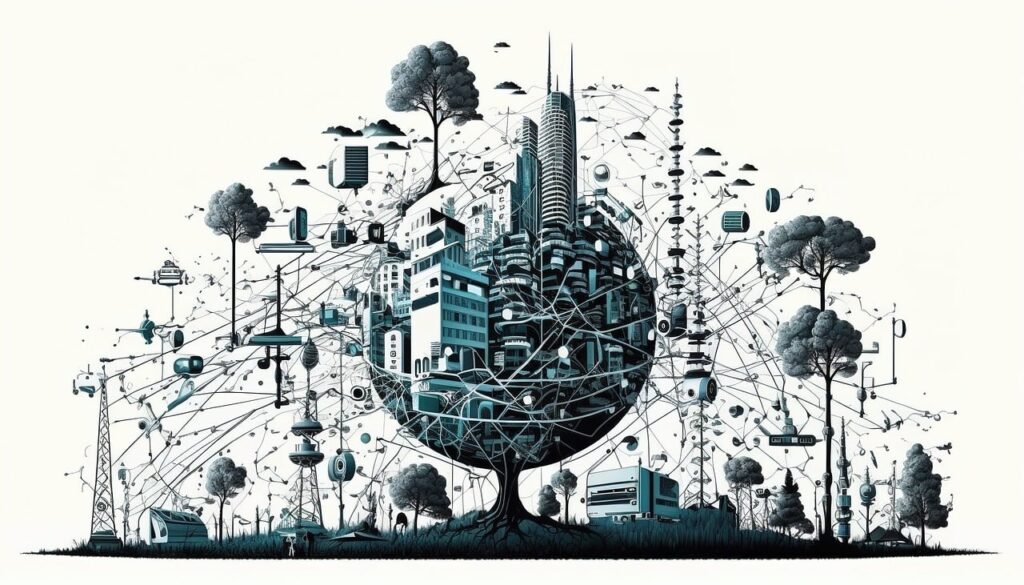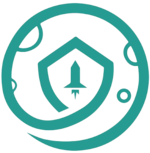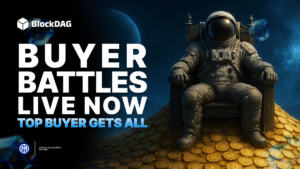
In the rapidly evolving landscape of technology, two groundbreaking innovations have emerged as frontrunners in shaping the future of connectivity: Blockchain and the Internet of Things (IoT). Individually, each technology has the potential to revolutionize industries and redefine the way we interact with the digital world. However, when combined, Blockchain and IoT create a powerful synergy that promises to transform not just industries, but the very fabric of our decentralized world.
This article delves into the intricacies of how Blockchain and IoT are revolutionizing connectivity, exploring their individual contributions, their intersection, and the future implications of their integration.
The Rise of Blockchain Technology
Blockchain technology, originally conceptualized as the backbone of cryptocurrencies like Bitcoin, has evolved far beyond its initial application. At its core, Blockchain is a decentralized ledger that ensures transparency, security, and immutability of data. Its decentralized nature eliminates the need for intermediaries, offering a more efficient and secure way to manage transactions and data.
One of the most significant features of Blockchain technology is its ability to create trust in environments where trust is typically difficult to establish. This feature has opened the doors to a multitude of applications across various industries, including finance, supply chain management, healthcare, and more. By providing a secure and tamper-proof way to store and share data, Blockchain technology is paving the way for a more connected and decentralized world.
The Internet of Things: A Connected Ecosystem
The Internet of Things (IoT) refers to the network of interconnected devices that communicate and exchange data with each other over the internet. These devices, ranging from everyday household items to complex industrial machinery, are equipped with sensors and software that enable them to collect and transmit data.
IoT has already made significant strides in various sectors, enhancing efficiency, productivity, and convenience. For example, smart homes use IoT devices to automate lighting, heating, and security systems, while smart cities leverage IoT to improve traffic management and resource allocation. In industrial settings, IoT facilitates predictive maintenance and optimizes supply chain operations by providing real-time data insights.
The Intersection of Blockchain and IoT
While Blockchain and IoT individually contribute to the advancement of technology, their integration presents even greater opportunities for innovation. The convergence of these two technologies addresses several key challenges associated with IoT, particularly in the areas of security, scalability, and interoperability.
Enhancing Security
One of the primary concerns with IoT is security. With billions of connected devices exchanging data, the risk of breaches and unauthorized access is significant. Blockchain technology, with its decentralized and immutable nature, offers a robust solution to this problem. By storing IoT data on a blockchain, each transaction is recorded across multiple nodes, making it nearly impossible for malicious actors to alter or tamper with the data.
Additionally, Blockchain’s cryptographic features ensure that data privacy is maintained, allowing only authorized parties to access sensitive information. This enhanced security framework is crucial for applications such as healthcare, where patient data must be protected from unauthorized access.
Improving Scalability
IoT networks generate vast amounts of data, posing challenges in terms of processing and storage. Blockchain’s decentralized architecture can help distribute the computational load across multiple nodes, improving the scalability of IoT systems. This distributed approach not only enhances performance but also reduces the risk of single points of failure, ensuring continuous operation even in the face of connectivity issues.
Facilitating Interoperability
The diversity of IoT devices and platforms often leads to interoperability challenges. Blockchain can serve as a universal protocol, enabling seamless communication and data exchange between disparate IoT systems. By providing a standardized framework for data sharing, Blockchain facilitates collaboration and ensures that devices from different manufacturers can interact effectively.
Practical Applications and Use Cases
The integration of Blockchain and IoT is not just theoretical; it is already being implemented in various sectors to address real-world challenges and create innovative solutions.
Supply Chain Management
One of the most promising applications of Blockchain and IoT is in supply chain management. By leveraging IoT sensors, businesses can track the location and condition of goods in real-time. When combined with Blockchain, this data is securely recorded, providing an immutable audit trail that enhances transparency and accountability.
This integration helps prevent fraud, reduces delays, and improves the overall efficiency of supply chains. For example, food suppliers can use Blockchain and IoT to trace the origin of products, ensuring quality and safety standards are met throughout the supply chain.
Smart Cities and Infrastructure
As urbanization continues to rise, smart cities are becoming a focal point for sustainable development. Blockchain and IoT play a crucial role in creating intelligent infrastructure that optimizes resource utilization and enhances the quality of life for residents.
IoT devices can monitor energy consumption, traffic patterns, and environmental conditions, while Blockchain ensures that this data is securely shared and analyzed. This integration enables city planners to make data-driven decisions, improving public services and reducing environmental impact.
Healthcare and Wearable Technology
In the healthcare sector, Blockchain and IoT are transforming patient care and data management. Wearable devices equipped with IoT sensors can monitor vital signs and transmit data to healthcare providers in real-time. By storing this data on a blockchain, patient privacy is protected, and healthcare professionals have access to accurate and up-to-date information.
This integration enhances the quality of care, facilitates remote monitoring, and enables personalized treatment plans based on comprehensive data insights.
Challenges and Considerations
Despite the immense potential of Blockchain and IoT, their integration is not without challenges. Several considerations must be addressed to ensure successful implementation and widespread adoption.
Technical Complexity
The integration of Blockchain and IoT involves complex technical processes, including the development of compatible protocols and standards. Organizations must invest in research and development to overcome these challenges and create seamless interoperability between devices and blockchain networks.
Regulatory and Compliance Issues
As with any emerging technology, regulatory frameworks for Blockchain and IoT are still evolving. Organizations must navigate a complex landscape of data protection laws, industry standards, and compliance requirements to ensure the responsible use of these technologies.
Energy Consumption
The decentralized nature of Blockchain requires significant computational power, raising concerns about energy consumption. As IoT networks expand, finding sustainable solutions to balance the energy demands of Blockchain is essential to minimize environmental impact.
The Future of a Decentralized World
The integration of Blockchain and IoT is poised to redefine the future of connectivity, driving the transition toward a decentralized world. As technology continues to advance, the possibilities for innovation are limitless. Blockchain and IoT will continue to empower individuals and organizations, fostering an environment of trust, transparency, and collaboration.
In a decentralized world, individuals will have greater control over their data, and organizations will operate more efficiently and sustainably. This shift has the potential to democratize access to information, create new economic models, and address pressing global challenges.
Conclusion
The convergence of Blockchain and IoT represents a paradigm shift in the way we connect and interact with the digital world. By addressing key challenges and unlocking new opportunities, these technologies are shaping the future of a decentralized world. As we continue to explore the potential of Blockchain and IoT, it is essential to approach their integration with careful consideration and a commitment to responsible innovation.
As we move forward, embracing the synergy between Blockchain and IoT will not only revolutionize connectivity but also empower a new era of technological advancement and societal progress.
#ChatGPT assisted in the creation of this article.







